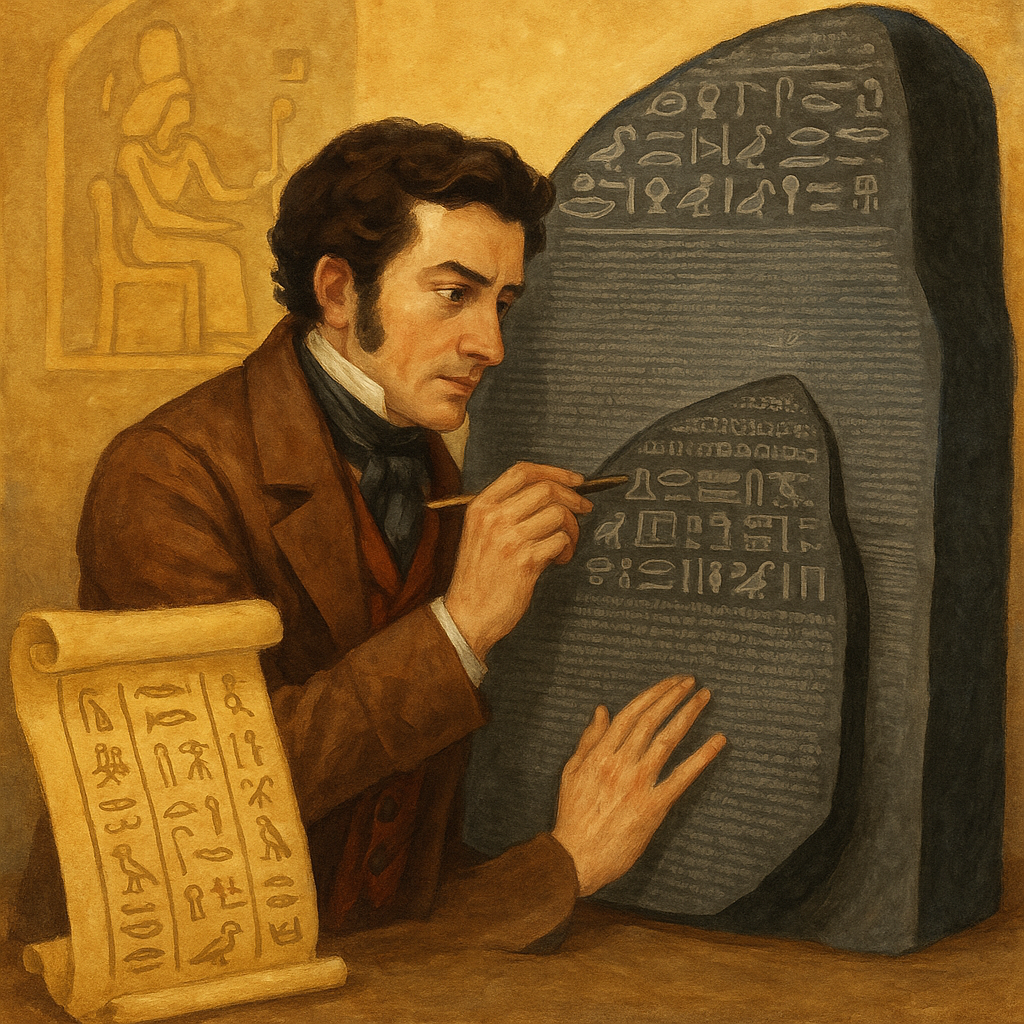Lesson 4: Egyptian Achievements (Kingdoms of the Nile)
✍️ Egyptian Writing
Writing was one of the greatest achievements of Ancient Egypt.
📜 Writing in Ancient Egypt
The Egyptians used hieroglyphics, a kind of picture writing. Each symbol could mean a sound, a word, or an idea. Scribes used these to write on papyrus, a kind of paper made from plants by the Nile.
📖 Fun Fact: There were over 600 hieroglyphs! Scribes studied for years to learn them all.
🪨 The Rosetta Stone
For a long time, no one could read hieroglyphics. But in 1799, a French soldier found the Rosetta Stone. It had the same text written in Greek, demotic, and hieroglyphics. A man named Jean-François Champollion finally cracked the code in 1822 — like a real-life puzzle master!
📖 Cool Story: Thanks to the Rosetta Stone, we can now read old Egyptian texts and learn more about their lives!
📚 Egyptian Texts
Egyptians wrote poems, prayers, love letters, and stories. One famous story is The Tale of Sinuhe, about a man who leaves Egypt and returns years later.
🕰️ The Egyptian Calendar
Egyptians created a 365-day calendar to track the Nile floods and plan for farming. This calendar is very similar to the one we use today!
📖 Fun Fact: Their calendar had 12 months, each with 30 days, plus 5 extra days for holidays and gods' birthdays!
🏛️ Egypt’s Great Temples
Temples were homes for the gods. They were also places for festivals, offerings, and worship.
🎇 The Great Temples
Famous temples include:
Karnak Temple in Thebes – the largest temple in Egypt.
Luxor Temple – connected to Karnak by a road lined with sphinx statues.
Abu Simbel – built by Ramses II, with giant statues of himself outside!
📖 Story: The Abu Simbel temple was moved in the 1960s because it was going to be underwater from a dam! Workers cut the temple into pieces and put it back together on higher ground — like a giant puzzle!
Temples were filled with columns, paintings, and treasures. Only priests and pharaohs could enter the inner rooms.
🎨 Egyptian Art
Egyptian art was not just for fun — it told stories and showed respect for the gods and the dead.
🖼️ Paintings
Egyptian paintings were bright and colorful. People were painted in a special way: their heads and legs were shown from the side, but their chests and eyes faced forward!
📖 Fun Fact: Artists often painted scenes of farming, hunting, and celebrations to show life in Egypt or what someone wanted in the afterlife.
🪓 Carvings and Jewelry
Egyptians made stone carvings for temples and tombs. They also made beautiful jewelry with gold and turquoise.
📖 Story: King Tutankhamun’s tomb had over 5,000 treasures, including a gold mask that weighs over 20 pounds and is now one of the most famous pieces of jewelry in the world!
🧠 Why It Matters
Writing helped Egyptians record history and religion.
Temples showed their faith and power.
Art helped us understand what life in Ancient Egypt was like.
